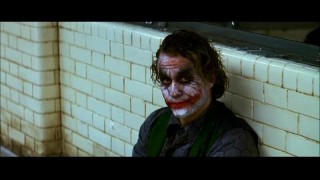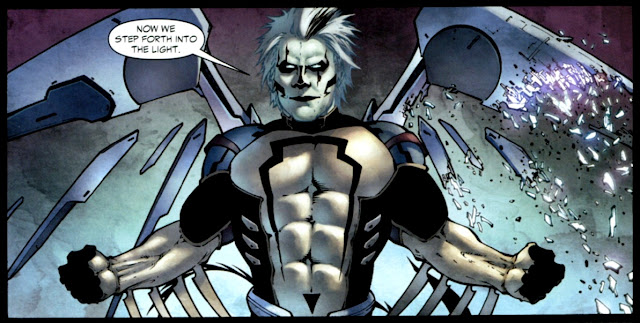This post is a re-posting of an update I wrote for the official FURSCA blog.
While my
quest to discover whether or not superheroes have earned the rank of modern
mythology remains far from finished, I have been encouraged to report my
findings thus far. Now, rather than focus on one book at a time, I have elected
to approach my work in a more school-oriented fashion, which entails reading
from four major areas of study: literary theory, mythology, superhero
scholarship, and, of course, superhero comics. Since the theory is largely
preparation for my final analysis and few would be interested in my opinions of
Batman: Earth One, I will focus here
on my findings in the realms of mythology and superhero scholarship (which,
much to my disappointment, is actually scholarship about superheroes, not scholarship by superheroes).
Mythology
is undeniably an attractive buzzword. In advertising and academia alike, the
term mythology seems to get tossed around with little regard to any actual meaning.
For example, the back of the above-mentioned Batman: Earth One graphic novel reads, “[W]riter Geoff Johns and
artist Gary Frank reimage a new mythology for the Dark Knight, where the
familiar is no longer the expected in this long-awaited original graphic novel
from DC Comics.” Likewise, Jeffery K. Johnson’s Super-History: Comic Book Superheroes and American Society, Johnson
begins like this:
When a hero is
needed a hero is born. Although this may sound like simplistic or wishful
thinking, in reality societies and cultures give birth to the mythological
heroes they need. Hercules, King Arthur, Beowulf, and hundreds of other
fictional heroes have supplied help and guidance to their homelands. These
heroic symbols reflect their societies’ values and fulfill their cultures
needs. . . . If the United States ever needed a hero it was during the summer
of 1938. (7)
Johnson refers
here to the inception of the world’s first official superhero, Superman. He
later claims that the Man of Steel would become the first in a long line of
modern mythical heroes: “By the first few years of the twenty-first century,
superheroes have become the dominant form of American mythology” (189). So, as
you can see, the word “mythology” gets tossed around quite often. And, at first
glance, it seems incredibly appropriate. The similarities between superheroes
and the myths of old dare us to deny our spandex-clad icons mythical status:
they are “super” heroes who reflect a culture’s values and ideological changes,
even over time, they are written and revised by many authors (again, over time),
and they are extremely popular. But is that enough?
Well, it depends on who you ask. Jeffery K. Johnson focuses on the foremost of the above-mentioned
criteria of mythological status in his book. By charting the progression of
superheroes decade-by-decade from 1938 to the present, Johnson shows that
superheroes do indeed reflect our culture and, more importantly, our culture’s
changes. His general analysis can be broken down as follows:
- 1938-1940—Early superheroes like Superman and Batman are “social avengers.” As products of the Great Depression and its injustice, these caped crusaders fought for the common man: stopping thugs, revealing corrupt politicians, preventing cons, etc. They were the hoped-for cure to everyday problems that overwhelmed the unfortunate.
- 1941-1945 (yes, you remember correctly, that’s World War II)—Even before American troops joined the second great war, America’s superheroes were opposing the axis powers. Who can forget the cover of Captain America #1, a comic released in 1941, which featured Cap socking Adolf Hitler square on jaw? Later, when America finally joined the fight, so too did the rest of the heroes. Superhero comics constituted 1/3 of the literature sent to US troops overseas. Domestically, superheroes like Superman promoted the purchasing of war bonds. “Just like average Americans, comic book superheroes gave up their freedom in order to support the nation’s war effort” (Johnson 47).
- 1946-1959—Just as many American’s settled down for that suburban dream after the war, so too did superheroes. Straying heavily from their vigilante roots, most superheroes (if they survived this era) became “company men,” enforcing gender roles and maintaining the status quo. Superman, the once-mighty “social avenger” became a beacon of normality, his most threatening a Lois Lane constantly attempting to trick the Man of Steel into marriage.
- 1960-1969—The paranoid peace of the 50’s would not last forever, and soon superheroes found themselves once again on the front lines of social change. Problems like the Cuban Missile crises placed the nuclear threat foremost in the populace’s mind. Marvel Comics characters like Hulk, Spider-Man, and the Fantastic Four represented not only this new nuclear reality, but their narratives and realistic characterizations spoke to a rebelling youth culture while DC comics continued publishing conservative stories as they did in the 50's.
- 970-1979—The social issues of the 60’s bled into the 70’s, and, mixed with the variables of time and a more active youth culture, they created a decade of pessimism and change. For the first time since its inception in 1954, comic book writers began publishing without the Comic’s Code Authority stamp of approval established in 1954, starting with an issue of Amazing Spider-Man that illustrated the drug use (and the resultant consequences). Green Lantern, the staunch conservative, would find himself confronting problems of race and corruption, realizing that crime is more complex than simple black and white (or perhaps green and orange, for him): “I been readin’ about you,” an African American man says to Green Lantern, “How you work for the blue skins. . . . And how on a planet someplace you helped out the orange skins . . . and you done considerable for the purple skins! Only there’s skins you never bothered with--! The black skins!” (qtd. from Johnson 109). At the same time, Captain America foiled an in-government plot to take over the country (the leader, though never revealed is suggested to be a real-life, high-ranking official), and, as a result of his discovery, resigns his title of Captain America and becomes a man without a country. His distrust in government mirrored the nation’s post-Watergate.
- 1980-1989—The era of Dark Knight Returns and Watchmen witnessed yet another change in the superhero—a turn for the conservative. The relation of one to one’s government became a point of interest for superheroes and Americans alike, especially during the Reagan years. Superheroes became violent vigilantes, epitomized perhaps by Frank Miller’s Batman, Wolverine, and Daredevil stories, as they distrusted big government and began to see society as little more than a cesspool of criminality. Individualism was championed above anything else.
- 1990-1999—In the years following the Soviet Union’s collapse, superhero comics went through a great trial-and-error phase. Not really sure of how to act without their “supervillian,” Marvel and DC experimented with ways to keep up readership. Superman was “killed,” Peter Parker was replaced by his clone Ben Reilly, and Bane broke the Bat. Marvel and DC even joined forces for a limited run to see if they could attract more readers. Nothing stuck, and soon things went back to normal before the new millennium. Likewise, Johnson argues, the 90’s in America also represented a time with little direction. After the liberal and conservative phases of the previous 40 years, an answer had not been reached, and Americans entered the 21st Century still figuring things out.
- 2000-2009—September 11, 2001, changed everything for America. Fear and uncertainty defined the social milieu for many, including superheroes. Many of the larger events like Marvel’s Civil War, Avengers Dissembled, and the Skrull invasion forced readers and characters alike to question their friends and the stability of the established norm. DC’s Final Crises took an extra step and posed the question “What if the bad guys won—like actually won?” Stripped of their birthright to victory, superheroes had to face the reality of losing, which reflected the American fear of no longer being the “best” or invulnerable. Without the established moral structure provided by the Cold War, notions of right and wrong came into question, and America has, perhaps, become a house divided as a result. [Side note: Marvel’s post-2009 maxi-series Avengers Vs. X-Men certainly continues this theme]
Certainly, as Johnson has
demonstrated, Superheroes have effectively chronicled the changing ideologies
and cultural movements in America over the past 70 years. They reflect not only
our values, but our fears and anxieties as well, and they certainly had a
didactic effect on youthful readers, as was sometimes even intended. So are superheroes a mythology?
Well, I have no idea,
for, sadly, I have yet to discover the Holy Grail of mythology definitions (see
what I did there?). My readings from Joseph Campbell, one of the most
well-known students of comparative mythology, have produced mixed results. On
one hand he suggests that anyone or thing who “becomes a model for other
people’s lives . . . has moved into the sphere of being mythologized” (15), and
that “myths offer life models . . . [b]ut the models have to be appropriate to
the time in which people are living” (13). By these definitions, superheroes
could very well be considered a mythology, I think. He even concedes that Star
Wars could be a form of modern myth. But them, on the other hand, much of what
Campbell discusses concerns religious mythology, origin stories, and
transcendence. Surely superheroes do not meet these criteria—but then again,
neither does Star Wars.
So, as of now, the mythological
status of superheroes remains unknown. Perhaps the fruit of this project will
entail the development of a model by which mythologies can be organized by
their differing characteristics and functions. Then my job will be less akin to approving or denying superheroes mythological membership, but
rather choosing what level of membership they deserve.
Works
Cited
Campbell,
Joseph, and Bill D. Moyers. The Power of Myth. New York: Doubleday, 1988. Print.
Johnson,
Jeffrey K. Super-History: Comic Book Superheroes and American Society,
1938 to the Present. Jefferson, NC: McFarland, 2012. Print.











